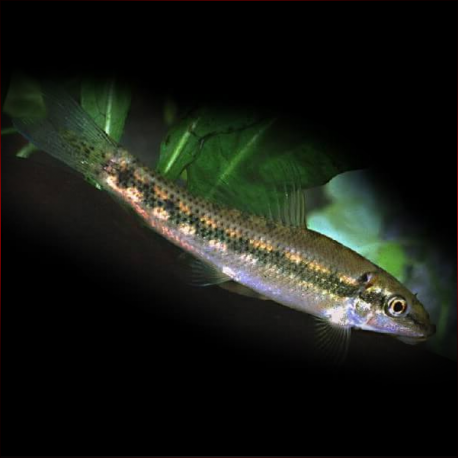More info
Datasheet
| Minimum Tank Size | 300 litres / 79.25 US gallons |
| Maximum Size | 28.0cm / 11.02inches |
| Temperature | 22°C / 71.60°F - 26°C / 78.80°F |
| Hardness | 2.02dgH / 36ppm - 20.00dgH / 357ppm |
| pH | 6.0-8.0 |
General Description
The Gyrinocheilus Aymonieri, commonly known as the Sucking 'Loach, is a widely-recognized aquarium fish that can live for over 15 years. It belongs to the order Cypriniformes and exhibits unique morphological features, lacking pharyngeal teeth and possessing small spiracle-like apertures for respiration. This species is often sold without adequate information on temperament, size, and age. Various ornamental strains, including albinos and short-bodied forms, exist alongside the natural color variation.
Aquarium Setup
For optimal care, a tank size of a minimum of 300 litres is required, set up to mimic a flowing river. The aquarium should have a temperature of 22-26°C, with a substrate of rocks, gravel, and boulders. Driftwood, roots, and aquatic plants like Microsorum and Anubias can be included. Bright lighting encourages algae growth for the fish to graze on.
Behaviour
Despite being commonly sold, the Gyrinocheilus Aymonieri is not suitable for a general community tank due to its territorial and aggressive nature as it matures. Tankmates should be carefully selected to avoid aggression issues. Keeping a group can help reduce intraspecific aggression, but a large tank is necessary due to the species' territorial behavior.
Feeding and Diet
Primarily an aufwuchs grazer, the Sucking 'Loach feeds on algae, small crustaceans, and insect larvae. It should be provided a varied diet of live and frozen foods such as bloodworms, Daphnia, along with quality dried flakes and fresh plant material. Vegetables like peas and cucumber, along with gel-based foods, are also recommended for their diet.
Reproduction & Dimorphism
While breeding this species in captivity is uncommon, they are farmed with the assistance of hormones for the aquarium trade. Sexually mature females exhibit a thicker body than males, and males develop tubercles on the snout during breeding conditions.
Habitat and Distribution
Native to the mountains of Samrong Tong in Cambodia, the Sucking 'Loach is found in river basins across Thailand, Laos, Cambodia, and Vietnam. Inhabiting flowing streams with substrates of boulders and pebbles, the species browses on biofilm in shallow, clear waters, often with submerged driftwood or tree roots. It undergoes seasonal migrations to deeper, turbid waters.

